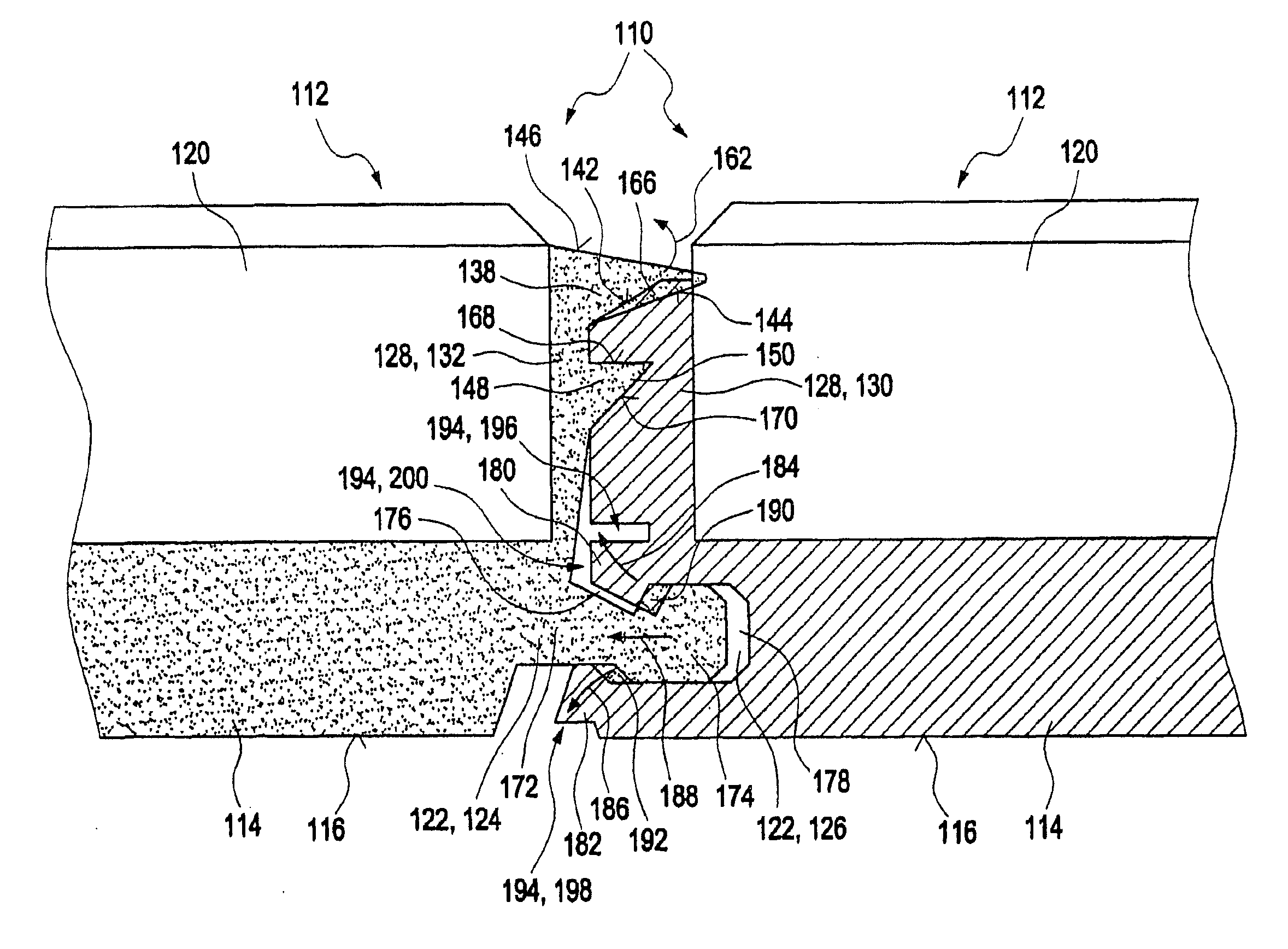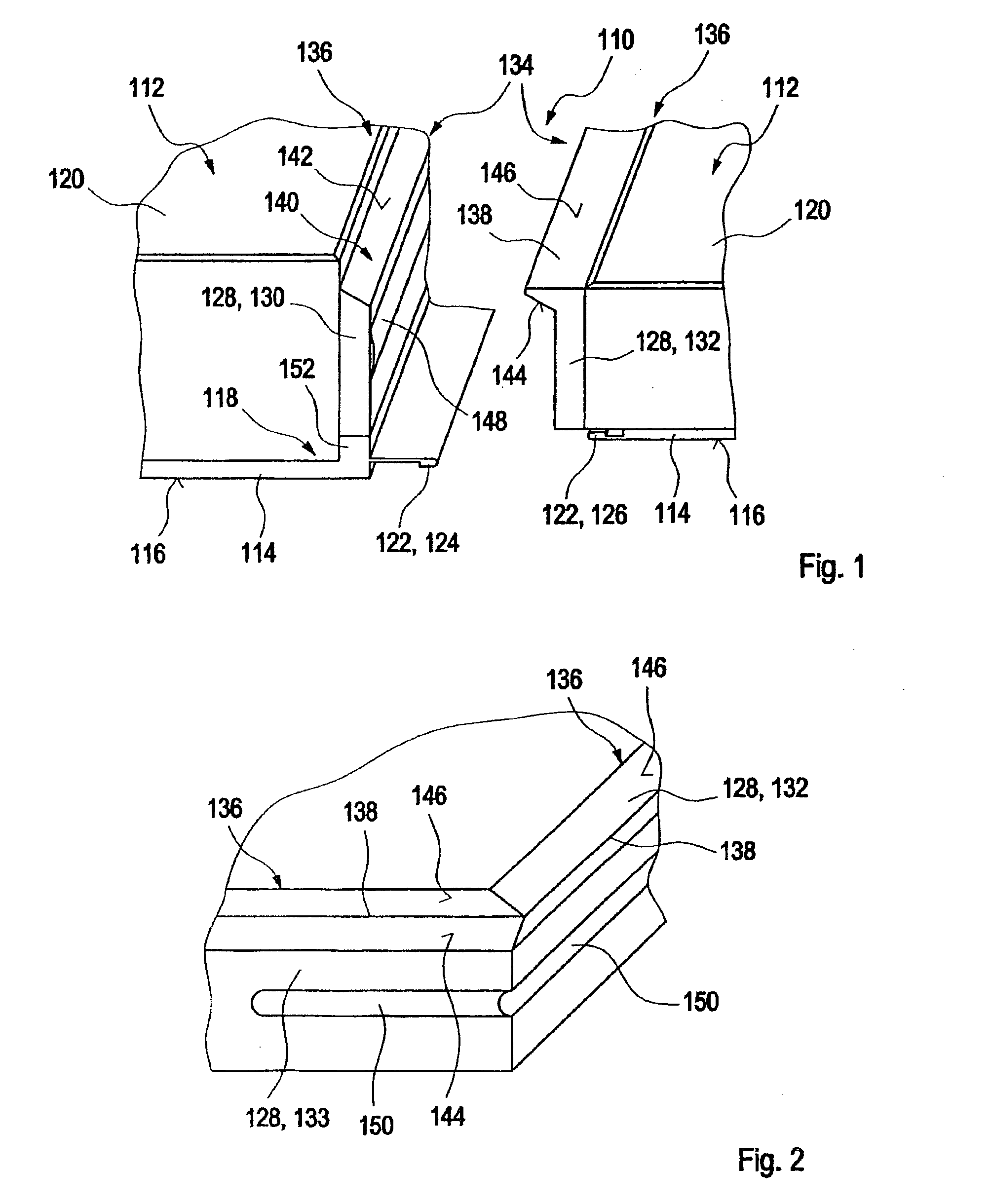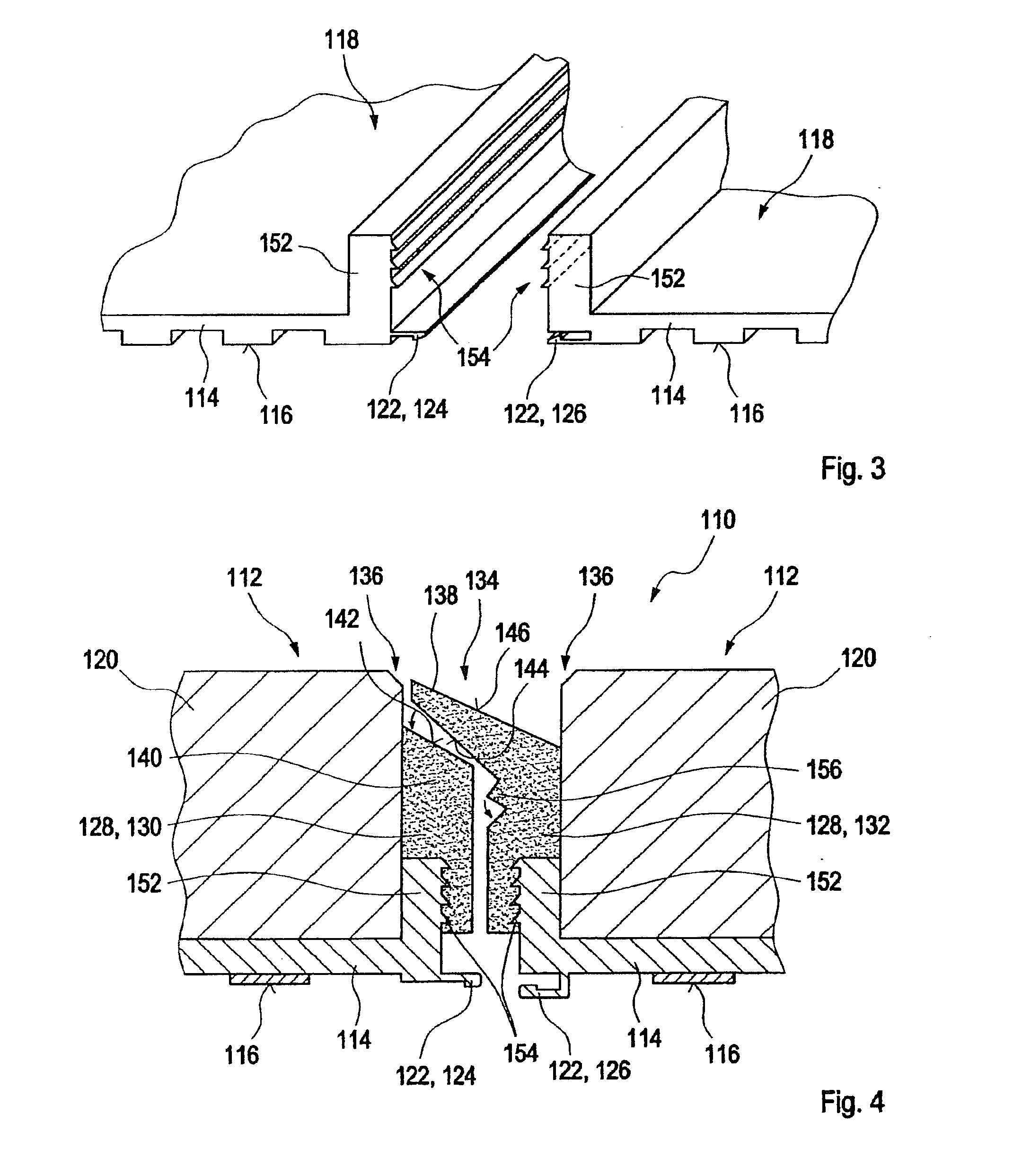Surface covering system
a technology of surface covering and surface covering, which is applied in the direction of floor covering, construction materials, building components, etc., can solve the problems of surface covering, gaps formed, and further demands
- Summary
- Abstract
- Description
- Claims
- Application Information
AI Technical Summary
Benefits of technology
Problems solved by technology
Method used
Image
Examples
Embodiment Construction
FIG. 1 shows a perspective representation of a first exemplary embodiment of a surface covering system 110 as claimed in the invention. In this case, cutouts of two covering modules 112 that interact in a complementary manner are represented not to scale and not to the correct scale one relative to the other. Said covering modules 112, when laid, are joined together, where applicable in common with further covering modules 112, to form the surface covering system 110.
The covering modules 112 include in each case a frame 114. Said frame 114 can be shaped, for example, as a plastics material frame and presents at least one supporting surface 116 for contact with the surface to be covered. The frame 114 can be shaped, for example, as a grid-shaped frame and in the exemplary embodiment shown comprises, for example, an indentation 118.
Covering materials 120 are inserted in each case into the indentation 118 of the frame 114. Said covering materials 120 are represented in the exemplary em...
PUM
| Property | Measurement | Unit |
|---|---|---|
| angle | aaaaa | aaaaa |
| angle | aaaaa | aaaaa |
| angle | aaaaa | aaaaa |
Abstract
Description
Claims
Application Information
 Login to View More
Login to View More - R&D
- Intellectual Property
- Life Sciences
- Materials
- Tech Scout
- Unparalleled Data Quality
- Higher Quality Content
- 60% Fewer Hallucinations
Browse by: Latest US Patents, China's latest patents, Technical Efficacy Thesaurus, Application Domain, Technology Topic, Popular Technical Reports.
© 2025 PatSnap. All rights reserved.Legal|Privacy policy|Modern Slavery Act Transparency Statement|Sitemap|About US| Contact US: help@patsnap.com



